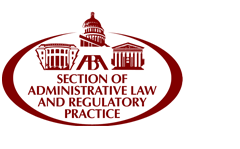Article Title
Seeing the State: Transparency as Metaphor
Volume
62
Issue
3
First Page
617
Abstract
When applied as a public administrative norm, the term and concept “transparency” has two intertwined meanings. First, it refers to those technocratic, constitutional and legislative tools that require the government to disclose information in order to inform the public and create a more accountable, responsive state. Second, in its use of metaphor, “transparency” identifies and decries the distance between the public and the state. Viewed together, both meanings demand efforts to impose legal obligations on the state to be “open,” and in the process suggest that such efforts are necessary to allow the public to eradicate the state’s physical, organizational, and affective remove or mitigate its ill-effects. But the meanings also operate in tension. The latter, populist understanding of transparency, with its desire to eradicate or at least mitigate the distance between the state and public and open government to its citizens’ gaze, drives efforts to develop and implement the institutional and legal frameworks described in the technocratic understanding of the term.
Although the desire to view the state results in an understandable and warranted commitment to uphold democratic principles, the state cannot in fact be made thoroughly visible. The contemporary American state is extraordinarily complex, and the organizational structure that the Constitution established neither disaggregates the complexity nor identifies simple institutional means for making the state’s multitudinous parts visible to the public. Federal and state statutes provide only piecemeal solutions, and the state’s increasing reliance upon private actors for information and services makes the enforcement of constitutional and statutory transparency requirements even more difficult to achieve. Such problems are compounded by the government’s sprawl across space, in national, state, and local jurisdictions, and in enclosed buildings that exclude the public and allow the government both to function and to hide. Reviewing the law and culture of “transparency,” the article concludes that the metaphoric meaning’s logical end, a reversal of Bentham’s Panopticon, demonstrates the impossibility and unattractive consequences of imposing a fully visible state. Nevertheless, the article argues, the populist understanding of transparency is too embedded within our political culture to ignore or avoid entirely, demonstrating that technocratic advances in making the state appear more open must ultimately rely upon metaphoric, populist gestures.
